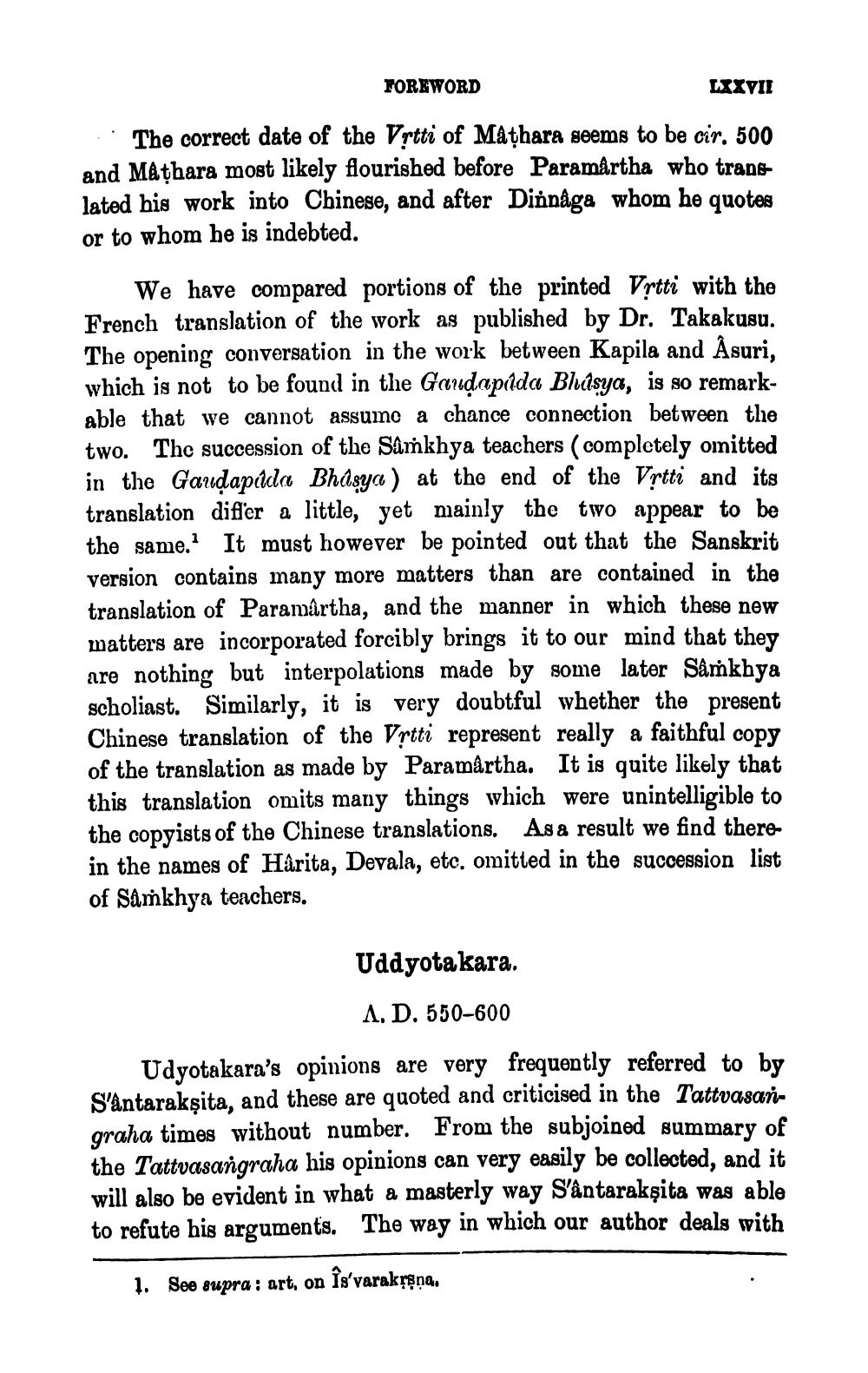________________
TOREWORD
LXXVII
The correct date of the Vrtti of Mathara seems to be cir. 500 and Mathara most likely flourished before Paramartha who trans lated his work into Chinese, and after Dinnåga whom he quotes or to whom he is indebted.
We have compared portions of the printed Vrtti with the French translation of the work as published by Dr. Takakusu. The opening conversation in the work between Kapila and Asuri, which is not to be found in the Gardapada Bhásya, is so remarkable that we cannot assume a chance connection between the two. The succession of the Samkhya teachers (completely omitted in the Gaudapáda Bhâsya) at the end of the Vrtti and its translation differ a little, yet mainly the two appear to be the same. It must however be pointed out that the Sanskrit version contains many more matters than are contained in the translation of Paramartha, and the manner in which these new matters are incorporated forcibly brings it to our mind that they are nothing but interpolations made by some later Sâmkhya scholiast. Similarly, it is very doubtful whether the present Chinese translation of the Vrtti represent really a faithful copy of the translation as made by Paramartha. It is quite likely that this translation omits many things which were unintelligible to the copyists of the Chinese translations. As a result we find there in the names of Hårita, Devala, etc. omitted in the succession list of Saṁkhya teachers.
Uddyota kara.
1. D. 550-600
Udyotakara’s opinions are very frequently referred to by S'antarakṣita, and these are quoted and criticised in the Tattvasangraha times without number. From the subjoined summary of the Tattvasangraha his opinions can very easily be collected, and it will also be evident in what a masterly way S'ântarakṣita was able to refute his arguments. The way in which our author deals with
1. See supra: art, on Îs'varakrgna.




